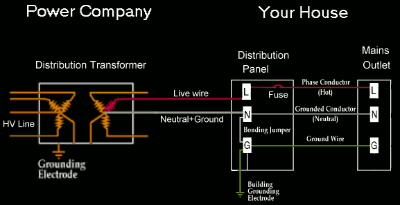It's not uncommon to have Neutral / Safety Ground swaps in a US type system. (it's wrong but not uncommon) So if there is a voltage drop on a Safety Ground then there is an error.
This from an Audio Precision note:
[h=1]Notes from the Test Bench[/h] By Bruce Hofer, Chairman & Co-Founder, Audio Precision
Recently, AP celebrated the 15th anniversary of our custom designed building. Photo albums were displayed showing the construction and the move into our facility back in 1998. (My, how some people have changed in appearance!) Among my many memories of that time, I was reminded of a particularly nasty problem we experienced as we restarted operations in our new production environment.
Almost immediately after moving we began to experience failures of certain bench tests that are performed by our technicians during the course of product assembly and adjustment. After some research, we discovered our new building had some extremely large magnetic fields in the production area, almost as if it was haunted. These fields coupled high levels of hum into our products that were causing the test failures. AP products are designed to reject reasonable levels of stray magnetic fields that would typically be encountered in a lab or production environment. However the magnitude of the fields we faced were at least 20 dB worse.
We ultimately discovered that several of our AC outlets had been wired incorrectly, having their neutral and ground connections swapped. This is a big no-no from the safety viewpoint, but it also caused all of the neutral currents in a particular circuit (outside of our production area) to return through the safety ground connection and ultimately through plumbing and drainage pipes. Some of these plumbing pipes were located in the space directly above our production area while the main drainage pipe was buried directly below; thus our production area was effectively inside of a huge coil. Our electrical contractor was embarrassed but confirmed our diagnosis, and the problem was quickly fixed.
Sometimes one has to think “outside of the box” to correctly perceive or understand a given problem. In this case, our new building plans provided the necessary insight to recognize the inadvertent source of our unwanted magnetic fields (plumbing that formed a coil around our production area). Perhaps you might want to check the neutral and safety ground connections of the AC outlets in your own work space—there could be some ghosts present!
Enjoy this month’s edition of our newsletter…
Bruce


















